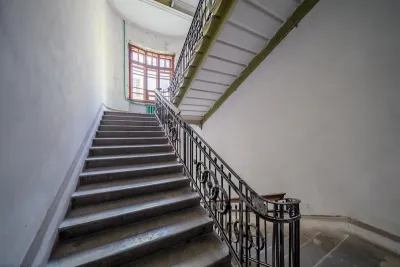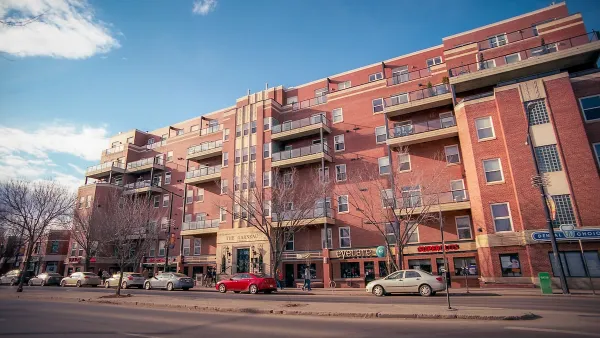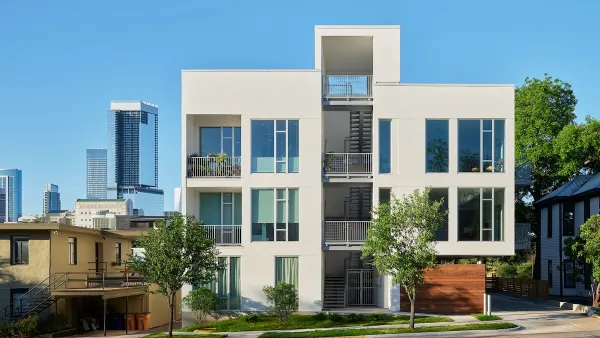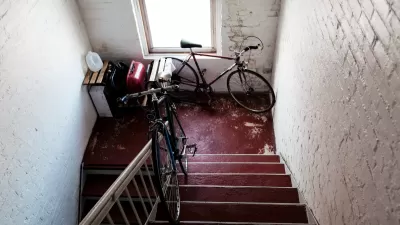Zoning codes have long prohibited single-stair residential buildings due to safety concerns, but changing that could lower the cost of construction and allow for more flexible housing designs.

Multifamily buildings with a single staircase don’t put residents at greater risk than double-staircase construction, according to a new study from Pew, contradicting a common belief that has led to restrictive zoning codes that outlaw single-stair buildings in most U.S. cities.
According to the Congress for New Urbanism’s Public Square, double stairwell requirements are “partly responsible for the dull, generic streetscapes” of most mid-rise neighborhoods because they “create large, long facades on a block that may suck the vibrancy out of streetscapes” and limit the amount of light that can enter the building.
Single-stairwell buildings can be built at a small-to-medium size in walkable neighborhoods. Single-stairwell buildings can fit onto small, irregularly shaped infill lots, contributing to missing middle housing.
In the past, “Cities required two stairwells for fire safety, but modern fire safety advancements and new building materials make the requirements superfluous.” Today, New York City, Seattle, and Honolulu are the only major U.S. cities to allow single-stair construction up to six stories, but the movement to legalize single-stair construction is growing, with bills to reform stair requirements proposed in jurisdictions including the Washington, D.C. region.
FULL STORY: Single stairs do not put residents at risk

Planetizen Federal Action Tracker
A weekly monitor of how Trump’s orders and actions are impacting planners and planning in America.

Maui's Vacation Rental Debate Turns Ugly
Verbal attacks, misinformation campaigns and fistfights plague a high-stakes debate to convert thousands of vacation rentals into long-term housing.

San Francisco Suspends Traffic Calming Amidst Record Deaths
Citing “a challenging fiscal landscape,” the city will cease the program on the heels of 42 traffic deaths, including 24 pedestrians.

Amtrak Rolls Out New Orleans to Alabama “Mardi Gras” Train
The new service will operate morning and evening departures between Mobile and New Orleans.

The Subversive Car-Free Guide to Trump's Great American Road Trip
Car-free ways to access Chicagoland’s best tourist attractions.

San Antonio and Austin are Fusing Into one Massive Megaregion
The region spanning the two central Texas cities is growing fast, posing challenges for local infrastructure and water supplies.
Urban Design for Planners 1: Software Tools
This six-course series explores essential urban design concepts using open source software and equips planners with the tools they need to participate fully in the urban design process.
Planning for Universal Design
Learn the tools for implementing Universal Design in planning regulations.
Heyer Gruel & Associates PA
JM Goldson LLC
Custer County Colorado
City of Camden Redevelopment Agency
City of Astoria
Transportation Research & Education Center (TREC) at Portland State University
Jefferson Parish Government
Camden Redevelopment Agency
City of Claremont





























